The Hazards of golf abound in an endless array of features. Most common and the oldest is sand. The by-product of time's erosive nature, sand represents the arid trappings of the errant shot. The variety of sand bunkers is limitless. The design, location, style, severity and construction of a sand bunker are also subject to many influences. Evolution has had the most consistent impact. The bunker is a feature that has evolved from the sandy links land to the inland course. The most overused and least understood feature of golf has remained the most consistent nuisance of the game.
The proper construction of a sand bunker must have three characteristics; adequate drainage, visibility and angular sand. The size, depth, location, severity and quantity are design considerations which vary from course to course and from designer to designer. The section below reveals the particulars of construction that keep maintenance costs down and consistency of play high.
The concave nature of the feature allows gravity to position the ball more central to the feature, which keeps sand in the bunker after each recovery shot. This feature keeps putting greens cleaner and more consistent, because sand stays in the hazard. Bunker sands vary significantly in shape, color and particle size distribution ratios. The most consistent and stable sands are sub-angular in shape and fall in the medium to coarse range.
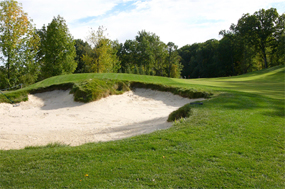
Bunker faces are the most expressive element of a
hazard. Fairway bunker on the 5th at the Westwynd looks
ominous due to the rugged edging.
Construction of a hazard is a simple but thoughtful process. The location and severity are the most important elements of design. The hazard below left shows the internal drainage and a bunker barrier, which allows excess water to reach the drain line without the sand washing out during storms.
Bunkers frame holes as an element of art. The strategic location is their most important function. The artistry of bunkers is also a design element that can highlight a hole and add the visual definition that excites the golfer.
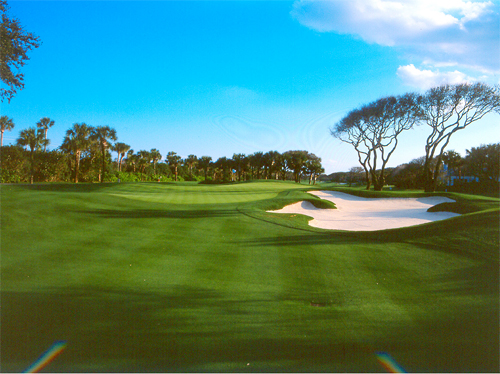
This
feature sets the approach to the green off beautifully at the 8th on the
North Course at Johns Island. The size and severity of the bunker is proportionate
to the wider openness of the left side. Shots can carom off the shoulder
of the left side to reach the green.
Strategic Architecture rewards shots that skirt hazards to reap the rewards of properly designed greens. The 8th hole on the North Course at Johns Island Club allows the tee shots that favor the left center of the approach the best access to most flagstick locations on the green. The back right flagstick location is protected by the bunker, but shots can still reach that hole location because of the green contouring.
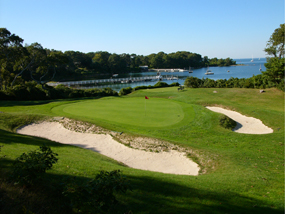
The
17th at Woods Hole features the most visited hazard on the course. The
face is covered in sand due to the frequency of balls entering the hazard.
The look is rough and weathered, which fits the coastal environment.
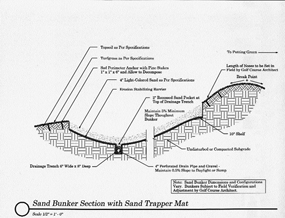
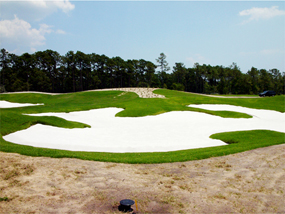
During
grow-in bunkers are the most visible features until the rest of the hole
matures. This green side bunker at the Members Club is the main hazard
on the short 14th hole.
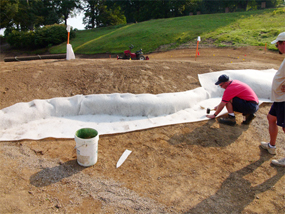
Sandtrapper-1
is being installed after drainage. Notice how the lip of the bunker is
also covered. On this green side bunker on the 4th green at Parkersburg
CC.

